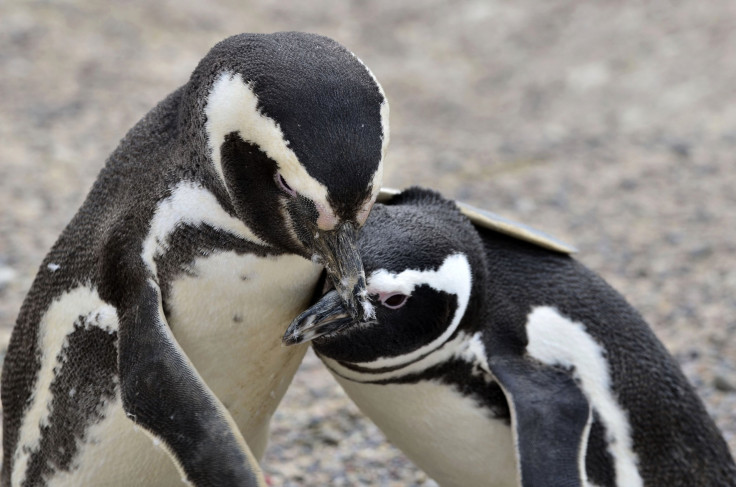Climate Change Has Major Impact On Penguin Chicks’ Survival: Study

Climate change is killing penguin chicks both directly and indirectly in Argentina, a new study by researchers at the University of Washington has found.
According to the study, published in the journal PLOS ONE, climate change can threaten penguin chicks not just indirectly by depriving them of food, but directly as a result of drenching rainstorms and heat. When exposed to drenching rain, penguin chicks can die of hypothermia, and during extreme heat, these young penguins cannot take a dip in cooling waters as they do not have waterproof feathers.
“It’s the first long-term study to show climate change having a major impact on chick survival and reproductive success,” Dee Boersma, a biology professor at the University of Washington and the lead author of the study, said in a statement. Boersma has led field work since 1983 at the world’s largest colony of Magellanic penguins at Punta Tombo on Argentina's Atlantic coast, where 200,000 pairs of the birds live from September through February for breeding.
The researchers said that they examined data spanning 27 years, during which 65 percent of all chicks died on average each year, while about 40 percent of them starved. While climate change killed an average of 7 percent of chicks a year, there were instances when it was the most common cause of death, killing 43 percent of all chicks in one year and 50 percent in another.
“Starving chicks are more likely to die in a storm,” Boersma said. “There may not be much we can do to mitigate climate change, but steps could be taken to make sure the Earth’s largest colony of Magellanic penguins have enough to eat by creating a marine protected reserve, with regulations on fishing, where penguins forage while raising small chicks.”
The researchers said that rainfall and the number of storms in each breeding season have increased at the Argentine study site. According to them, the number of storms increased in the first two weeks of December -- the period when all chicks are less than 25 days old and most vulnerable to death from storms -- between 1983 and 2010.
There are 17 species of penguins found on Earth, and 10 of them -- including Magellanics -- breed in relatively dry places, where there is no snow. Punta Tombo is so dry that it gets an average of only 4 inches of rain during the six-month breeding season and, sometimes, no rain at all.
“Rain is a problem and kills down-covered chicks ages 9 to 23 days if they can’t warm up and dry off after heavy storms in November and December when temperatures are likely to dip,” a university statement said. “If chicks can live 25 days or more, most have enough juvenile plumage to protect them. Once chicks die, parents do not lay additional eggs that season.”
In addition to the coast of Argentina, Magellanic penguins also breed on the Chile-side of South America and in the Falkland Islands in the South Atlantic Ocean. The penguins share these breeding areas with about 60 other seabird species, which according to the scientists, also are vulnerable to climate change.
© Copyright IBTimes 2024. All rights reserved.






















